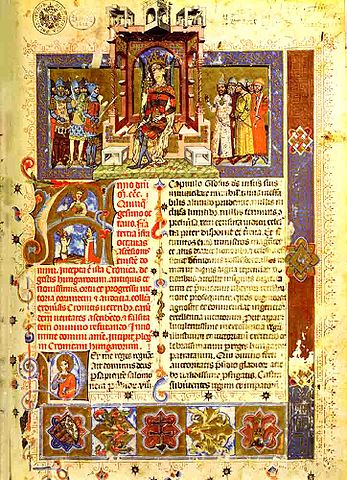 |
This is a file from the Wikimedia Commons. Information from its description page there is shown below.
Commons is a freely licensed media file repository. You can help.
|
This is a faithful photographic reproduction of an original two-dimensional work of art. The work of art itself is in the public domain for the following reason:
| Public domainPublic domainfalsefalse |
 |
This image (or other media file) is in the public domain because its copyright has expired.
This applies to Australia, the European Union and those countries with a copyright term of life of the author plus 70 years.
 You must also include a United States public domain tag to indicate why this work is in the public domain in the United States. Note that a few countries have copyright terms longer than 70 years: Mexico has 100 years, Colombia has 80 years, and Guatemala and Samoa have 75 years, Russia has 74 years for some authors. This image may not be in the public domain in these countries, which moreover do not implement the rule of the shorter term. Côte d'Ivoire has a general copyright term of 99 years and Honduras has 75 years, but they do implement the rule of the shorter term. You must also include a United States public domain tag to indicate why this work is in the public domain in the United States. Note that a few countries have copyright terms longer than 70 years: Mexico has 100 years, Colombia has 80 years, and Guatemala and Samoa have 75 years, Russia has 74 years for some authors. This image may not be in the public domain in these countries, which moreover do not implement the rule of the shorter term. Côte d'Ivoire has a general copyright term of 99 years and Honduras has 75 years, but they do implement the rule of the shorter term.
|
|
This file has been identified as being free of known restrictions under copyright law, including all related and neighboring rights.
|
The official position taken by the Wikimedia Foundation is that "faithful reproductions of two-dimensional public domain works of art are public domain, and that claims to the contrary represent an assault on the very concept of a public domain". For details, see Commons:When to use the PD-Art tag.
This photographic reproduction is therefore also considered to be in the public domain. Please be aware that depending on local laws, re-use of this content may be prohibited or restricted in your jurisdiction. See Commons:Reuse of PD-Art photographs.
{{ PD-Art}} template without parameter: please specify why the underlying work is public domain in both the source country and the United States
(Usage: {{PD-Art|1=|deathyear=|country=|date=}}, where parameter #1 can be PD-old-auto, PD-old-auto-1923, PD-old-100 or similar)
|
Illuminated Chronicle; Chronicon Pictum; Képes Krónika(HU)
- A fejkép Nagy-Lajos királyt ábrázolja menyezetes trónon, fehérrel és vörössel négyszer csikolt dolmányban, mely fölé hermelinnel bélelt bibor palást van vetve; fejét liliomos nyílt korona disziti, jobbjában kormánypálczát, baljában országalmát tart. A trón jobboldalán magyar főurak állanak nyugati öltözetben, sisakkal, karddal, pajzszsal; a bal oldalon levő csoport alakjai hosszu virágos köpenyekben, ijjal, nyillal, görbe karddal a hódolt népfajokat jelképezik. A kezdő betü felső részében Szent-Katalin alakja látható jobbjában pálmaággal, baljában a kerékkel, kinszenvedése eszközével; alatta Nagy-Lajos és Erzsébet királyné térdelnek. A keret jobb oldalán a patkót rágó strucz, az alsó szegélyen középen hármas halmon a kettős kereszt, balról az ezüst és vörös csikokból és liliomokból összetett magyar-Anjou czimer, jobbról koronás sisak látható, oromdiszében két strucztoll között patkót rágó struczmadárral.
A szövegét átirta és forditotta Dr. Dézsi Lajos Translation (fordítás)
File usage
The following pages on Schools Wikipedia link to this image (list may be incomplete):
Wikipedia for Schools was collected by SOS Children. SOS Childrens Villages believes education is an important part of a child's life. That's why we ensure they receive nursery care as well as high-quality primary and secondary education. When they leave school, we support the children in our care as they progress to vocational training or higher education. Have you heard about child sponsorship? Learn more...



